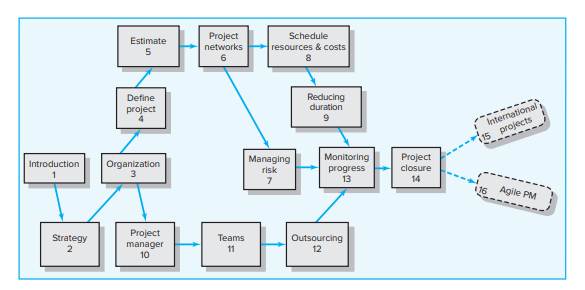What are some of the lessons learned from a recent project in your organization? Was a retrospective done? What action plans were generated to improve processes as a result of the project?
Maximum Megahertz Project
Olaf Gundersen, the CEO of Wireless Telecom Company, is in a quandary. Last year he accepted the Maximum Megahertz Project suggested by six up-and-coming young R&D corporate stars. Although Olaf did not truly understand the technical importance of the project, the creators of the project needed only $600,000, so it seemed like a good risk. Now the group is asking for $800,000 more and a six-month extension on a project that is already four months behind. However, the team feels confident they can turn things around. The project manager and project team feel that if they hang in there a little longer they will be able to overcome the roadblocks they are encountering—especially those that reduce power, increase speed, and use a new technology battery. Other managers familiar with the project hint that the power pack problem might be solved, but “the battery problem will never be solved.” Olaf believes he is locked into this project; his gut feeling tells him the project will never materialize, and he should get out. John, his human resource manager, suggested bringing in a consultant to axe the project.
Olaf decided to call his friend Dawn O’Connor, the CEO of an accounting software company. He asked her, “What do you do when project costs and deadlines escalate drastically? How do you handle doubtful projects?” Her response was, “Let another project manager look at the project. Ask: ‘If you took over this project tomorrow, could you achieve the required results, given the extended time and additional money?’ If the answer is no, I call my top management team together and have them review the doubtful project in relation to other projects in our project portfolio.” Olaf feels this is good advice.
Unfortunately, the Maximum Megahertz Project is not an isolated example. Over the last five years there have been three projects that were never completed. “We just seemed to pour more money into them, even though we had a pretty good idea the projects were dying. The cost of those projects was high; those resources could have been better used on other projects.” Olaf wonders, “Do we ever learn from our mistakes? How can we develop a process that catches errant projects early? More importantly, how do we ease a project manager and team off an errant project without embarrassment?” Olaf certainly does not want to lose the six bright stars on the Maximum Megahertz Project.
Olaf is contemplating how his growing telecommunications company should deal with the problem of identifying projects that should be terminated early, how to allow good managers to make mistakes without public embarrassment, and how they all can learn from their mistakes.
Give Olaf a plan of action for the future that attacks the problem. Be specific and provide examples that relate to Wireless Telecom Company

With Chapter 14 the project life cycle is complete. You have been exposed to the core elements of project management. We have consciously tried to incorporate a blend of sociocultural and process practices required to successfully manage any project. These best practices are transferable across industries. Your understanding of these chapters should enhance your ability to make a positive contribution in any project environment.
The supplemental chapters that follow expand on the core by covering international project management, and Agile methods.
∙ Chapter 15. Explores different international environments in which you may have to manage a project. In large high technology firms we estimate that 60–90 percent of their projects are virtual and across many cultures. If you find yourself new in this environment, the international chapter is an excellent primer on the types of conditions and issues you may encounter in an international project.
∙ Chapter 16. Agile methodology is used in complex projects (e.g., software and new innovation products) where the final design requirements are not known and evolve as the project is implemented. The methodology breaks requirements into small functional pieces that allow rapid response to change. Agile embraces flexibility, change, small teams, and owner involvement.

